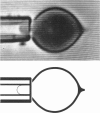Abstract
This is the first of two papers on an analytical and experimental study of the flow of the erythrocyte membrane. In the experiment to be discussed in detail in the second paper, preswollen human erythrocytes are sphered by aspirating a portion of the cell membrane into a small micropipette; and long, thin, membrane filaments or "tethers" are steadily withdrawn from the cell at a point diametrically opposite to the point of aspiration. The aspirated portion of the membrane furnished a "reservoir" of material that replaces the membrane as it flows as a liquid from the nearly spherical cell body to the cylindrical tether. In this paper we show that an application of the principle of conservation of mass permits the tether radius (approximately 200 A or less) to be measured with the light microscope as the tether is formed and extended at a constant rate. A static analysis of the axisymmetric cell deformation and tether formation process reveals that the tether radius is uniquely determined by the isotropic tension in the membrane and the elastic constitutive (material) behavior of the tether itself. A dynamic analysis of the extensional flow process reveals that the tether radius must decrease as the velocity of the tether is increased and that the decrease depends on both the viscosity of the membrane and the elasticity of the tether. The analysis also shows that these two factors (membrane viscosity and tether elasticity) are readily decomposed and determined separately when flow experiments are performed at different isotropic tensions.
Full text
PDF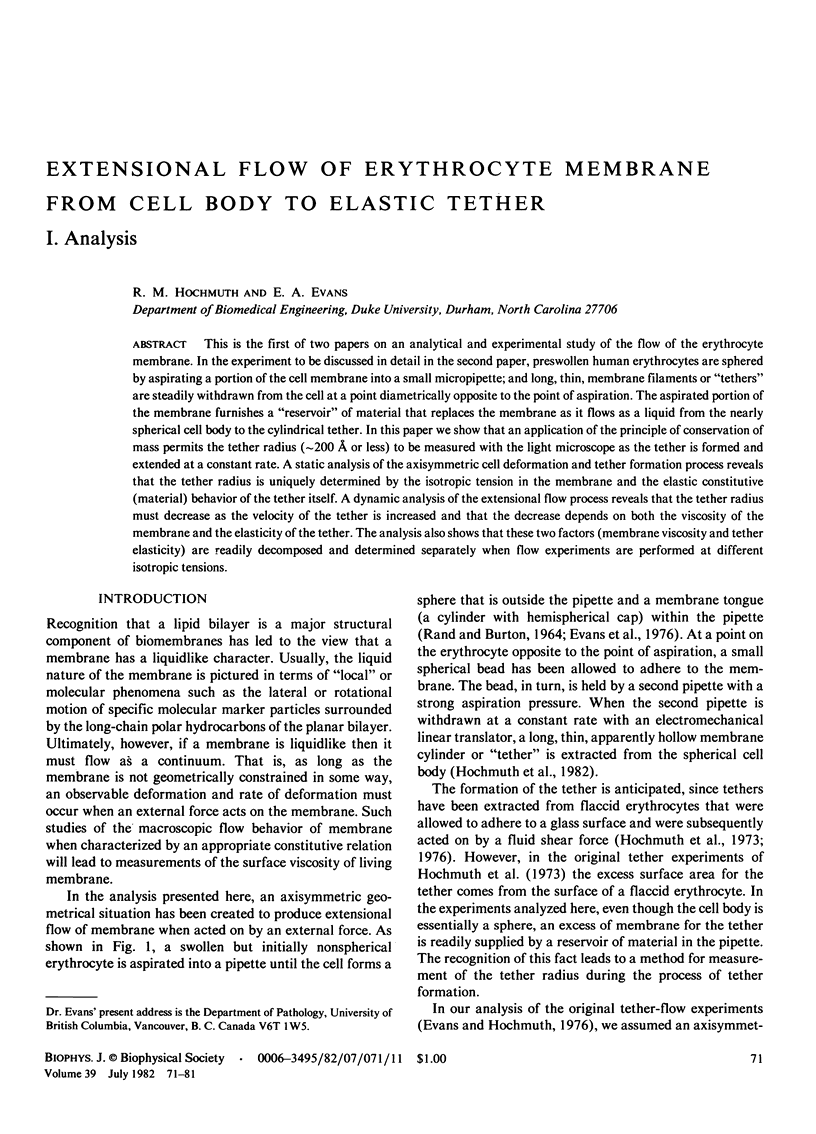
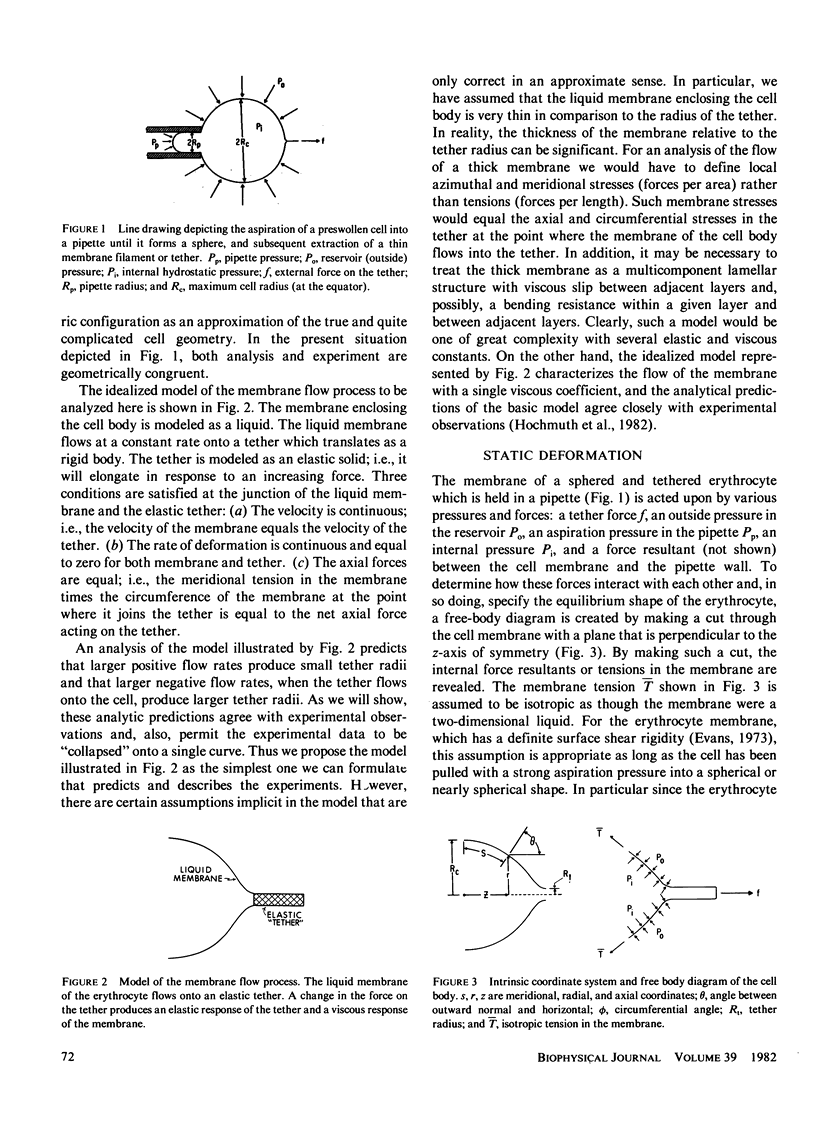
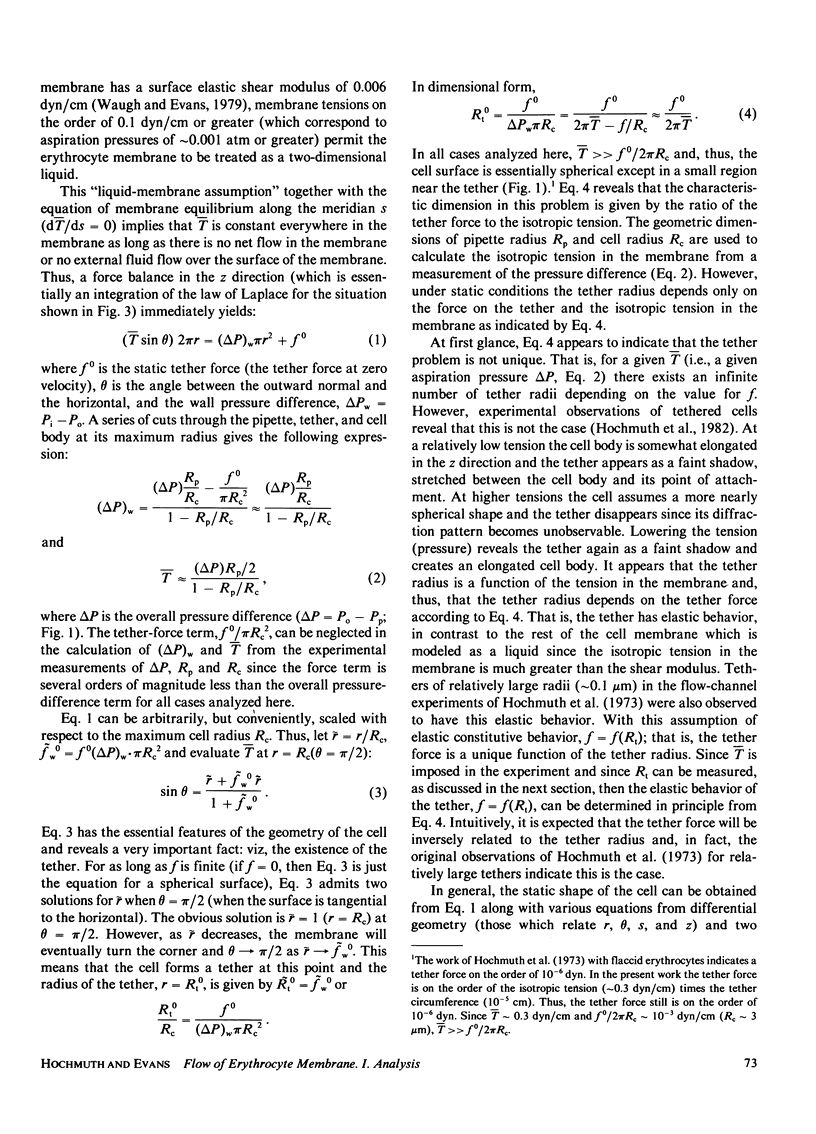
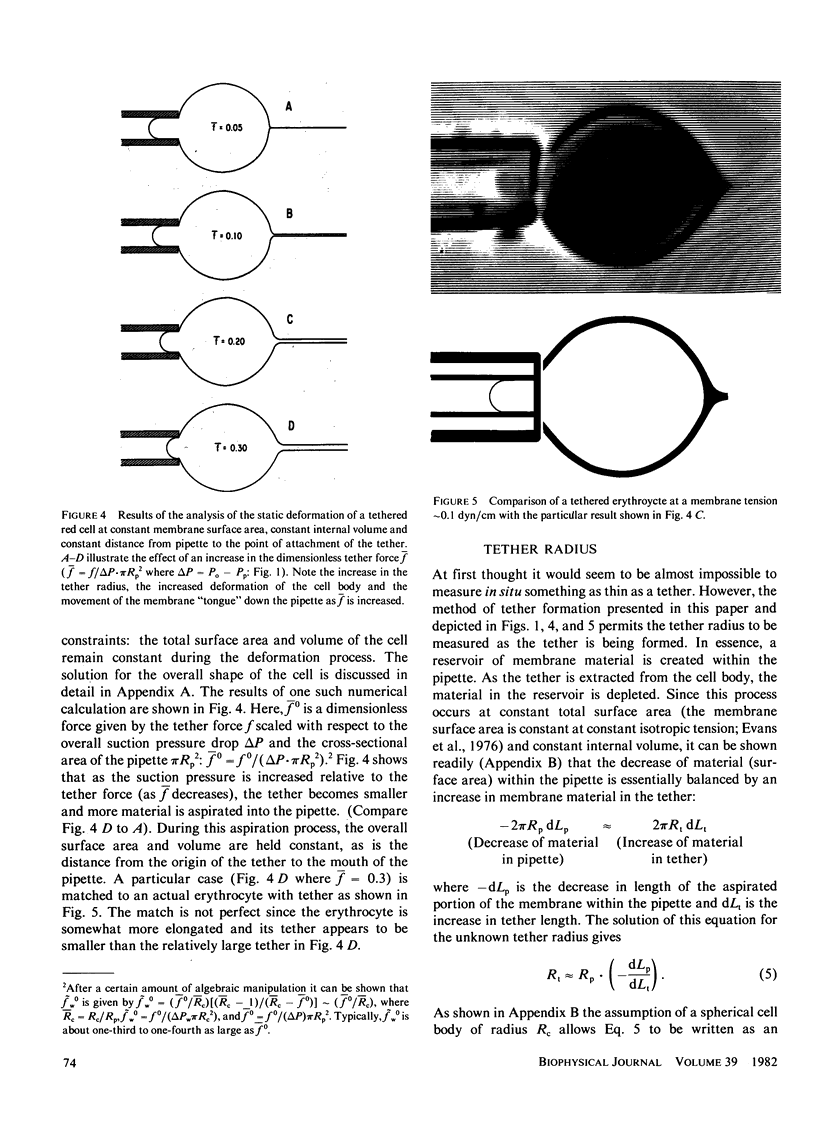
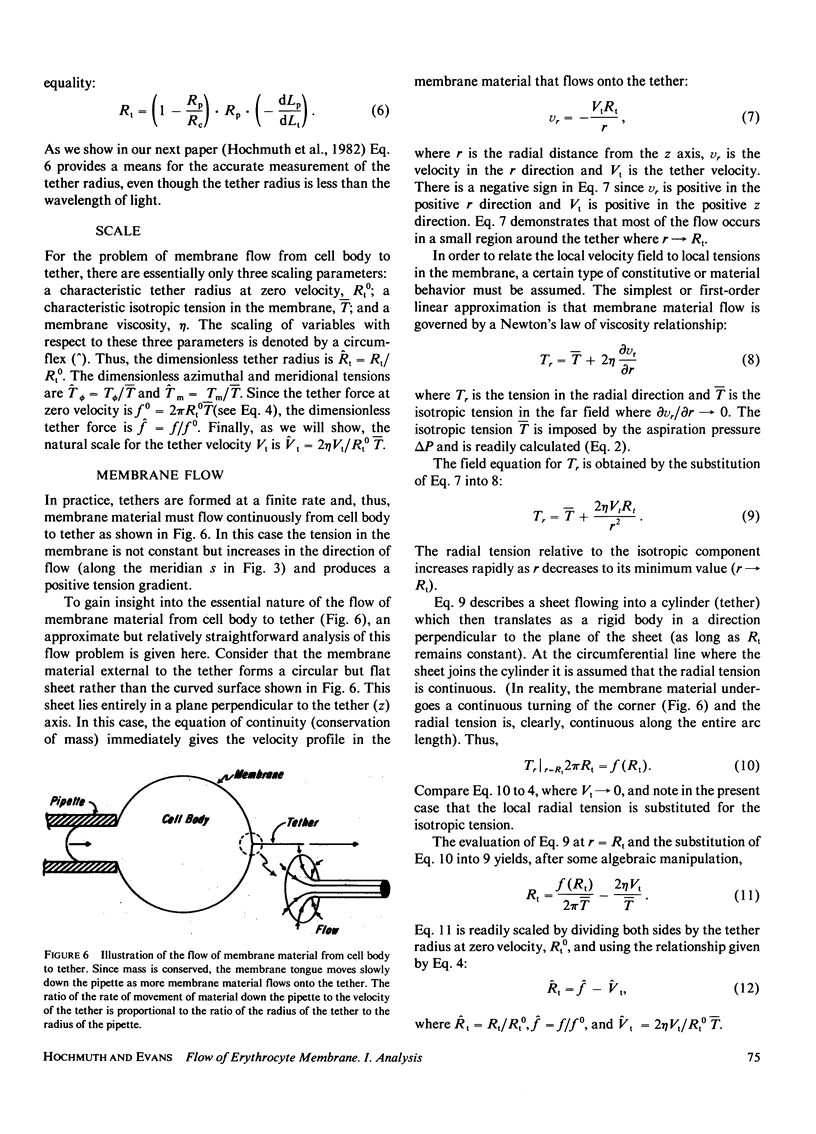
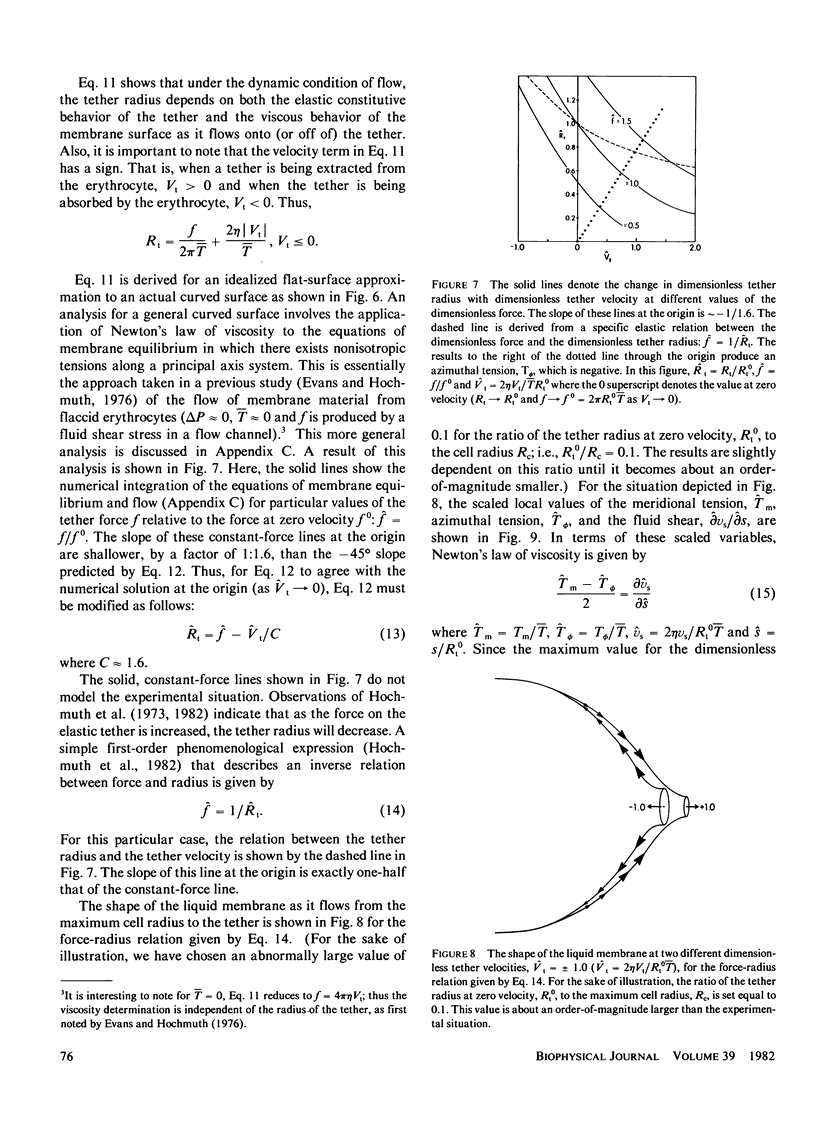
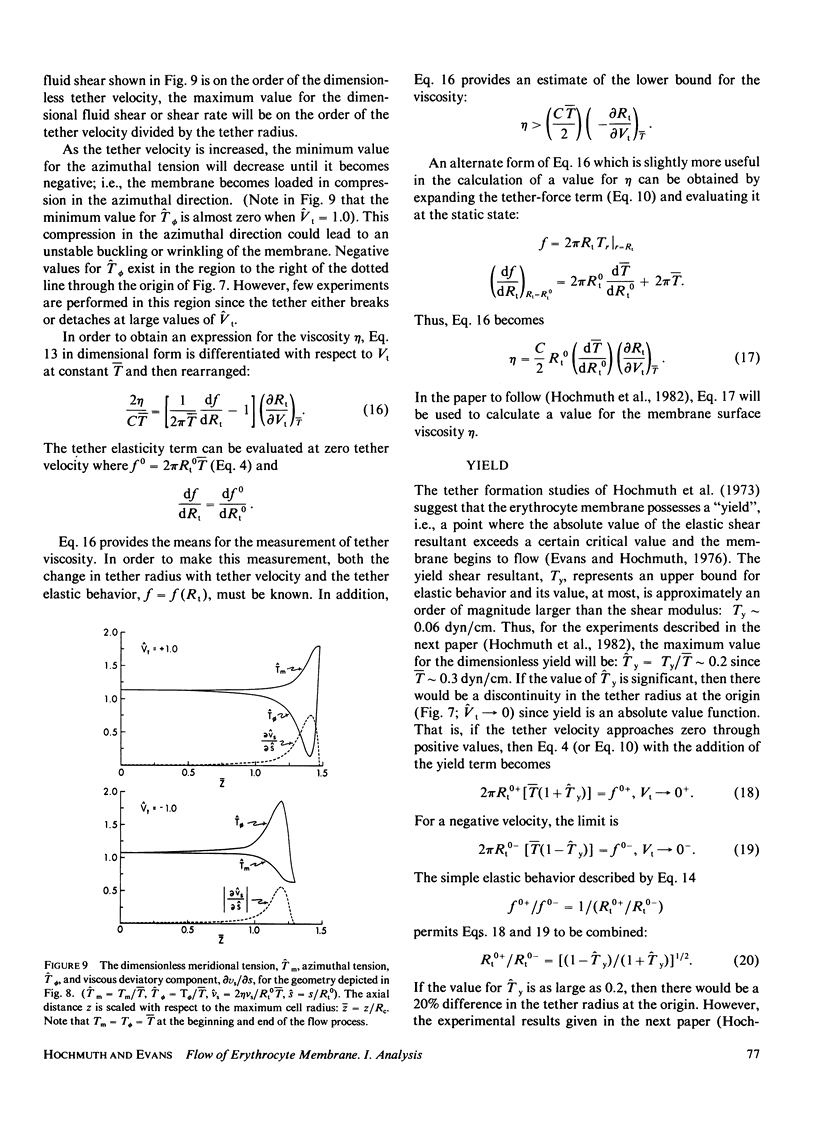

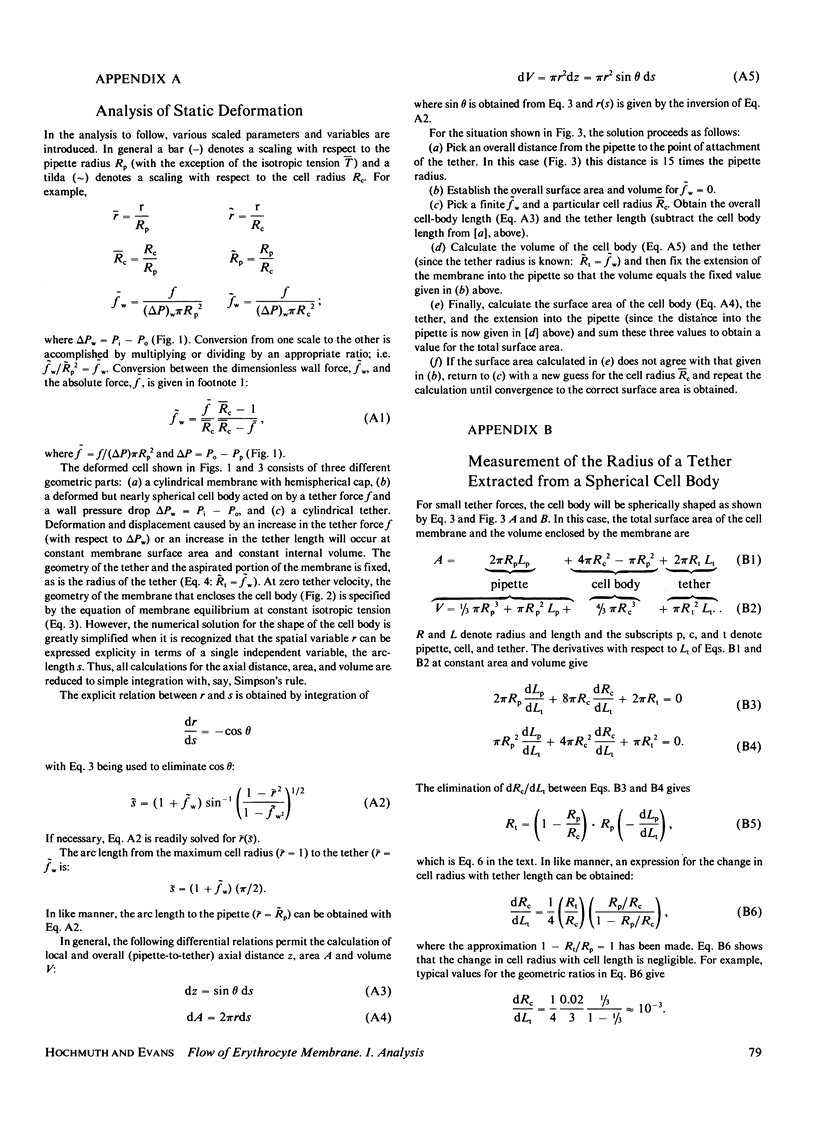
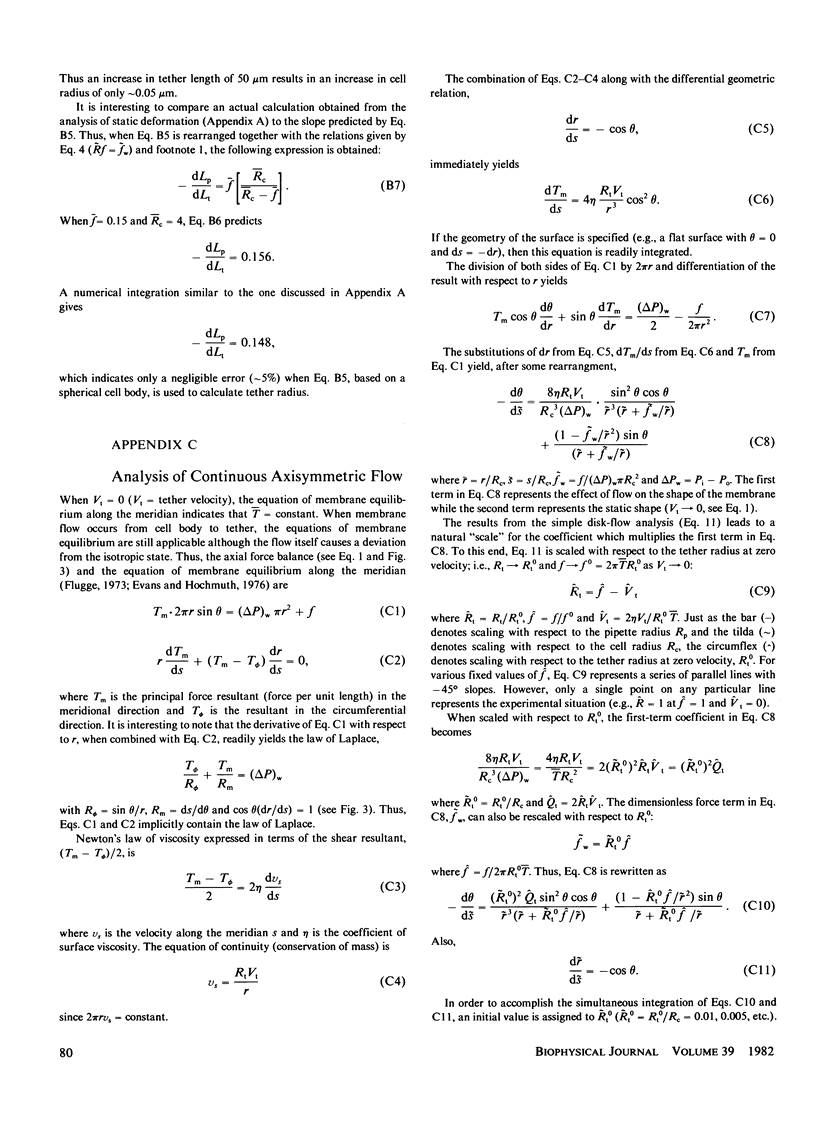
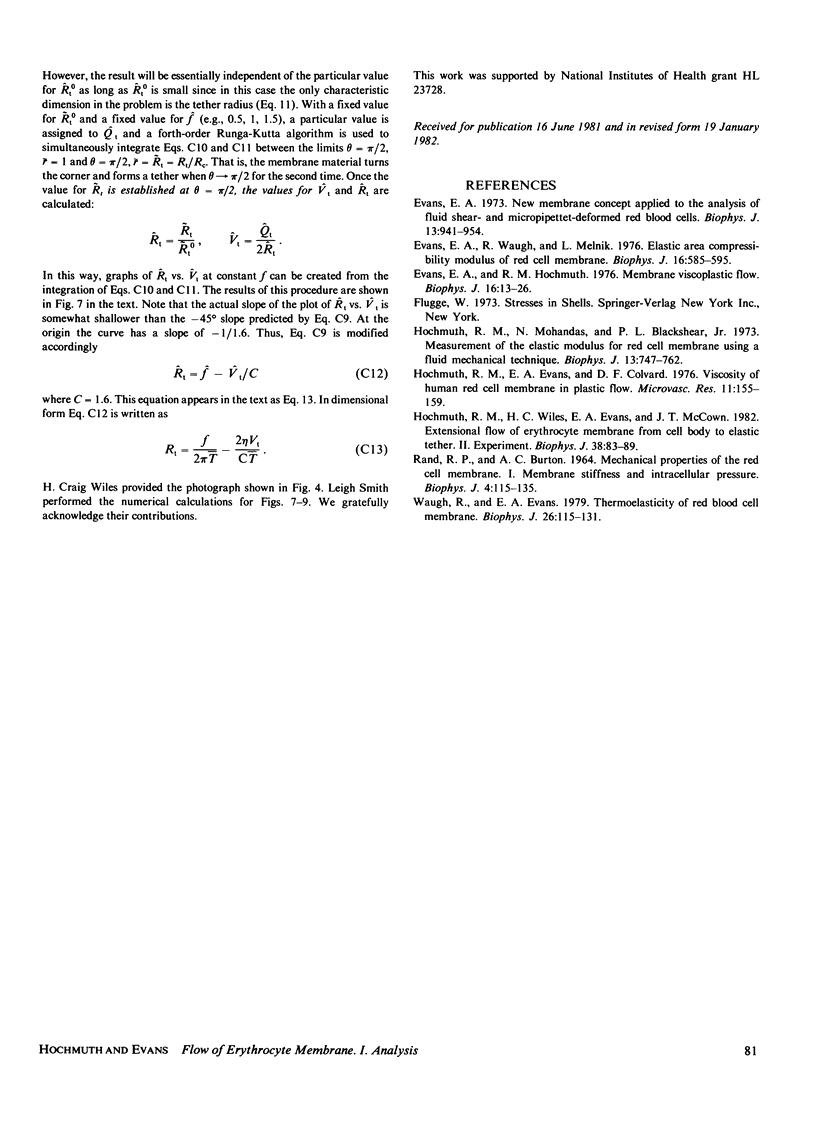
Images in this article
Selected References
These references are in PubMed. This may not be the complete list of references from this article.
- Evans E. A., Hochmuth R. M. Membrane viscoplastic flow. Biophys J. 1976 Jan;16(1):13–26. doi: 10.1016/S0006-3495(76)85659-7. [DOI] [PMC free article] [PubMed] [Google Scholar]
- Evans E. A. New membrane concept applied to the analysis of fluid shear- and micropipette-deformed red blood cells. Biophys J. 1973 Sep;13(9):941–954. doi: 10.1016/S0006-3495(73)86036-9. [DOI] [PMC free article] [PubMed] [Google Scholar]
- Evans E. A., Waugh R., Melnik L. Elastic area compressibility modulus of red cell membrane. Biophys J. 1976 Jun;16(6):585–595. doi: 10.1016/S0006-3495(76)85713-X. [DOI] [PMC free article] [PubMed] [Google Scholar]
- Hochmuth R. M., Evans E. A., Colvard D. F. Viscosity of human red cell membrane in plastic flow. Microvasc Res. 1976 Mar;11(2):155–159. doi: 10.1016/0026-2862(76)90047-9. [DOI] [PubMed] [Google Scholar]
- Hochmuth R. M., Mohandas N., Blackshear P. L., Jr Measurement of the elastic modulus for red cell membrane using a fluid mechanical technique. Biophys J. 1973 Aug;13(8):747–762. doi: 10.1016/S0006-3495(73)86021-7. [DOI] [PMC free article] [PubMed] [Google Scholar]
- Hochmuth R. M., Wiles H. C., Evans E. A., McCown J. T. Extensional flow of erythrocyte membrane from cell body to elastic tether. II. Experiment. Biophys J. 1982 Jul;39(1):83–89. doi: 10.1016/S0006-3495(82)84493-7. [DOI] [PMC free article] [PubMed] [Google Scholar]
- RAND R. P., BURTON A. C. MECHANICAL PROPERTIES OF THE RED CELL MEMBRANE. I. MEMBRANE STIFFNESS AND INTRACELLULAR PRESSURE. Biophys J. 1964 Mar;4:115–135. doi: 10.1016/s0006-3495(64)86773-4. [DOI] [PMC free article] [PubMed] [Google Scholar]
- Waugh R., Evans E. A. Thermoelasticity of red blood cell membrane. Biophys J. 1979 Apr;26(1):115–131. doi: 10.1016/S0006-3495(79)85239-X. [DOI] [PMC free article] [PubMed] [Google Scholar]



